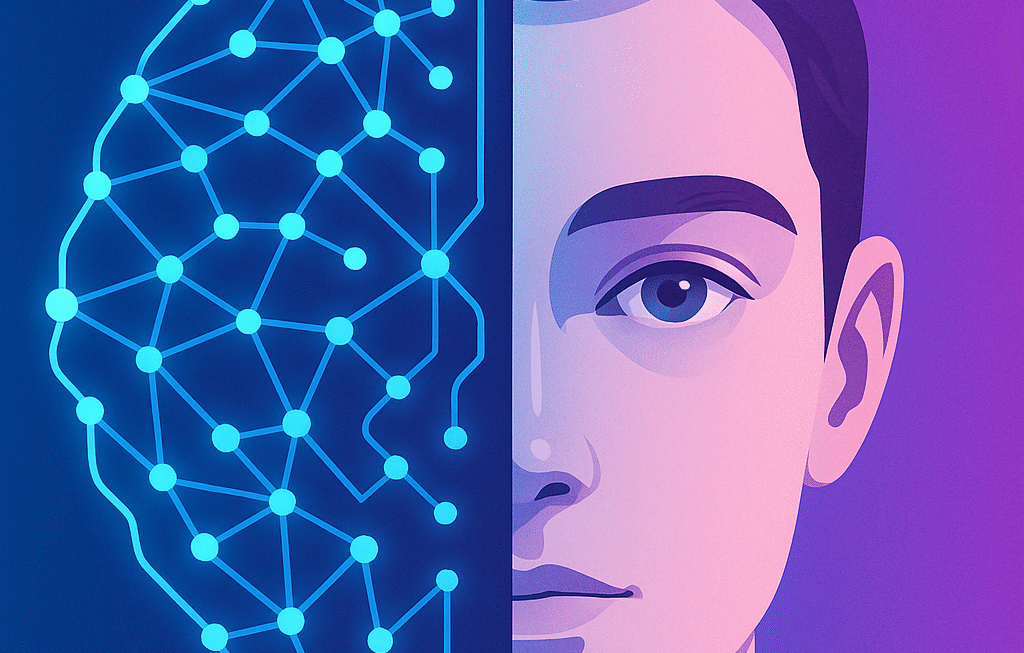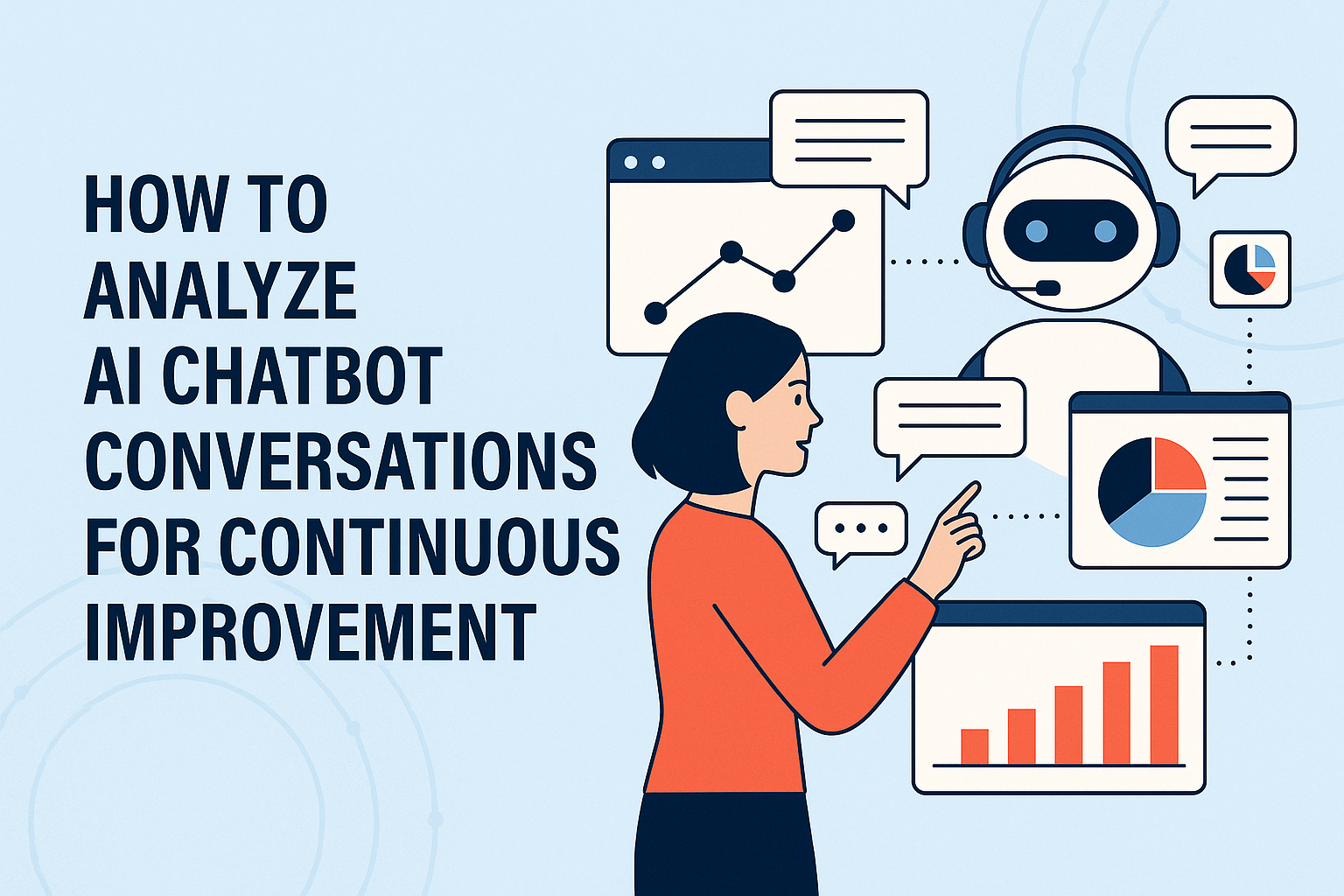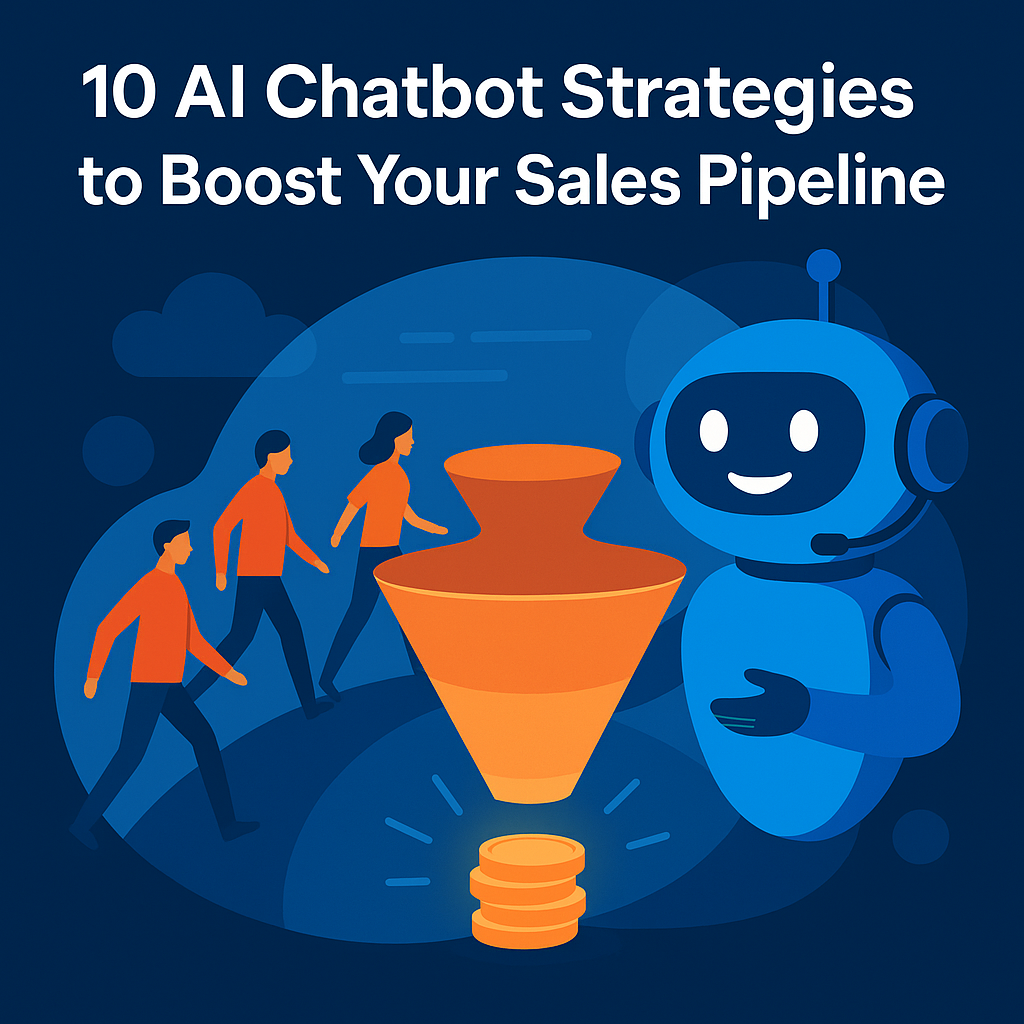Steve Jobs famously said, “You’ve got to start with the customer experience and work backward to the technology.” Today’s businesses don’t just use chatbots as support tools—they see them as strategic assets that provide personalized assistance, streamline interactions, and boost customer loyalty. But the difference between an average chatbot and an outstanding one lies in user experience (UX).
AI chatbots make customer interactions easier, faster, and more enjoyable. They provide instant responses, personalized recommendations, and seamless conversations—leading to happier, more loyal customers.
Why Chatbot User Experience Matters
A well-designed chatbot is more than a digital assistant—it’s an extension of your brand. Customers today demand instant, intuitive, and empathetic interactions. A chatbot that delivers on these fronts can:
- Boost satisfaction: Resolve issues faster than traditional support channels.
- Increase conversions: Guide users to products or services through personalized recommendations.
- Reduce costs: Automate up to 80% of routine inquiries, freeing human agents for complex tasks.
Core Principles of Effective Chatbot Design
1. Conversational Flow: The Backbone of UX
A seamless conversation flow ensures users achieve their goals effortlessly. Key strategies include:
- Simplicity: Avoid jargon. Use clear prompts like, “Would you like to track your order or explore new products?”
- Context Awareness: Remember previous interactions. For example, a banking chatbot should recall a user’s account type when discussing loan options.
- Guided Navigation: Offer buttons or quick replies for common actions (e.g., “Check Balance,” “Reset Password”).
2. Natural Language Processing (NLP): Bridging Human and Machine
Modern NLP enables chatbots to understand intent, slang, and even typos. For instance:
- A user types, “My order’s MIA.”
- NLP detects the intent (“track order”) and entity (“missing order”).
- The chatbot responds: “I’ll track your shipment. Can you confirm your order number?”
3. Emotional Intelligence: The Human Touch
Chatbots must recognize and respond to emotions to build trust. For example:
- User: “This delay is frustrating!”
- Chatbot: “I’m sorry for the inconvenience. Let me escalate this to our team for immediate assistance.” Tools like sentiment analysis algorithms can flag negative emotions, triggering empathetic responses or agent handoffs.
Optimizing Performance: Metrics That Matter
| Metric | Why It’s Important |
|---|---|
| Completion Rate | Measures % of fully resolved queries. Aim for >70%. |
| User Satisfaction (CSAT) | Post-chat surveys (e.g., “Rate your experience from 1–5”). |
| Average Handling Time | Speed impacts satisfaction. Ideal: Under 2 minutes. |
Example: After refining its error-handling process, Company X saw a 25% increase in completion rates and a 15% rise in CSAT scores.
Benefits of Optimized Chatbot Experiences
Optimizing chatbot experiences enhances efficiency by automating routine tasks, freeing human agents for complex issues, and improving customer satisfaction.
Research shows chatbots reduce support costs and speed up responses. By handling common inquiries efficiently, they lower expenses while improving customer satisfaction.
- Enhanced Customer Engagement & Satisfaction A retail chatbot offering personalized product recommendations keeps customers engaged, making them more likely to convert.
- Increased Efficiency & Cost Reduction AI chatbots can handle up to 80% of routine customer inquiries, reducing workload for human agents and cutting support costs.
- Competitive Advantage & Revenue Growth Companies using AI chatbots see an increase in customer retention and an average of 67% faster response times, giving them an edge over competitors.
Customer service automation helps businesses provide a smooth, intuitive experience, setting them apart and driving long-term success. Automate Customer Service and Boost Efficiency with AI Agents and Chatbots platform like SparkAgent AI (Learn how AI chatbots can improve customer retention).
Designing Your Chatbot’s Personality and Voice
Creating a chatbot that connects with customers is key. Chatbot personality is crucial for building trust and loyalty. It’s important to design a unique and engaging personality that matches your brand’s values and tone.
A consistent brand voice is essential for a unified customer experience. Develop guidelines for your chatbot’s tone, language, and personality. This ensures your chatbot’s responses match your brand’s messaging.
Adding emotional intelligence to your chatbot’s responses is vital. Program your chatbot to understand and respond to emotions. It should empathize with customers and offer personalized support. Key aspects to consider include:
A chatbot should feel like an extension of your brand. To build trust and consistency:
A chatbot should seamlessly reflect your brand’s identity. To foster trust and consistency:
- Establish a clear, brand-aligned tone.
- Craft empathetic, emotionally intelligent responses.
- Maintain uniform messaging across all customer interactions.
For instance, SparkAgentAI’s chatbot framework allows businesses to set a unique brand voice, ensuring every customer interaction reflects the company’s identity.
Building Effective Conversation Flows
Seamless conversation flows guide users toward solutions, but understanding intent is just as crucial. This is where Natural Language Processing (NLP) plays a vital role, enabling chatbots to interpret user input with greater accuracy.
Creating effective conversation flows starts with understanding user needs. Analyzing data and feedback helps shape intuitive, structured interactions. Key principles include:
- Keep interactions simple and intuitive.
- Use clear, direct responses.
- Offer seamless navigation options.
- Provide relevant and timely information.
For example, a banking chatbot should guide users from balance inquiries to transaction history smoothly, minimizing frustration and enhancing satisfaction

Implementing Natural Language Processing Capabilities
Natural language processing (NLP) makes chatbots more human-like by improving their ability to understand and respond naturally to user queries.
Understanding user intent is crucial for effective chatbot responses. A chatbot should feel natural—not robotic. Thanks to Natural Language Processing (NLP), chatbots can interpret:
✔ Intent – Understanding what users mean, even with typos or slang.
✔ Entities – Extracting key details like order numbers or locations.
✔ Context – Keeping track of past messages for smoother conversations.
Example:
🔹 User: “My package is missing!”
🔹 Chatbot: “I’ll track your shipment. Can you confirm your order number?”
SparkAgent AI leverages NLP and Gen AI to ensure accurate, natural interactions, continuously learning from user interactions to improve over time.
With natural language processing, chatbots can offer more personalized help. This tech is changing how chatbots talk to us, making it feel more natural. As chatbot tech gets better, natural language processing will play an even bigger role. It will help chatbots understand what users want and give better answers.
Error Handling and Fallback Strategies
Effective error handling is key in chatbot development for a smooth user experience. It helps catch and handle errors, unclear inputs, and exceptions. This builds trust and reliability with users, even when things go wrong.
An effective fallback strategy is crucial. When a chatbot encounters unclear input, it should provide a helpful default response or guide users to alternative solutions. This prevents frustration and maintains engagement.

Even advanced chatbots encounter ambiguous requests. Prepare for hiccups with:
- Graceful Failures: “I didn’t catch that. Could you rephrase or choose an option below?”
- Escalation Paths: Seamlessly transfer to live agents when stuck.
- Feedback Loops: Log misunderstood queries to train the AI model weekly
Measuring and Analyzing Chatbot Performance
To ensure a chatbot works effectively, businesses must continuously monitor its performance. Key metrics such as conversation completion rates, user satisfaction, and response times provide valuable insights into areas that need improvement. Analyzing these indicators helps businesses refine chatbot interactions and enhance user experience.
Understanding how users interact with the chatbot, how often conversations are successfully completed, and overall customer sentiment can reveal critical areas for optimization. Special tools and dashboards provide a detailed view of chatbot performance, helping businesses make data-driven improvements.
Tracking performance metrics ensures a chatbot meets user expectations.
Businesses should monitor:
- Conversation completion rates to measure successful interactions.
- User satisfaction scores to gauge effectiveness.
- Response times for efficiency improvements.
By focusing on these performance metrics and leveraging AI-driven refinements, businesses can improve chatbot efficiency, enhance user satisfaction, and drive long-term success. With continuous updates, the chatbot can evolve, reaching up to 90% accuracy in responses over time.
Integration Best Practices for Seamless Customer Experience
For a seamless experience, businesses must integrate chatbots across multiple channels—social media, messaging apps, and websites. An omnichannel approach ensures consistency, making interactions smooth and reliable.
Integration is key for chatbots to share data with other systems. This helps businesses use their current systems better. For example, a chatbot can connect with a CRM system. This lets the chatbot know more about the customer and offer better support.
To provide a seamless customer experience, chatbots should integrate with:
- CRM systems for personalized responses.
- E-commerce platforms for order tracking.
- Social media and messaging apps for omnichannel support.
SparkAgentAI’s API integrations ensure chatbots work across multiple platforms, delivering a consistent and intuitive experience.
Following these best practices helps businesses create a seamless customer experience. This leads to more engagement, loyalty, and revenue. By using omnichannel and API strategies, companies can offer an exceptional experience to their customers.
Conclusion: Future-Proofing Your AI Chatbot Strategy
AI chatbots are revolutionizing customer engagement, but their success hinges on thoughtful design, technical robustness, and relentless iteration. By prioritizing user-centric principles—clarity, empathy, and adaptability—businesses can turn chatbots into loyal brand ambassadors.
“The best chatbots don’t just solve problems—they create delightful experiences.”
AI chatbots are constantly evolving. Businesses must:
- Stay updated with AI advancements like emotional intelligence and predictive analytics.
- Regularly refine chatbot responses using data-driven insights.
- Scale chatbot capabilities to match business growth.
By leveraging SparkAgentAI’s continuous learning model, businesses can ensure their chatbot remains effective, adaptive, and future-proof.
AI chatbots are reshaping customer engagement. Success hinges on UX, personalization, and continuous refinement. Businesses that optimize their chatbots gain a competitive edge, reduce costs, and boost customer satisfaction.
Ready to elevate your chatbot strategy?
Try SparkAgentAI today and experience intelligent, scalable chatbot solutions that drive business success. 🚀
FAQ
FAQ: AI Chatbot User Experience & SparkAgentAI
1. How do AI chatbots enhance customer engagement?
AI chatbots provide 24/7 support, instant responses, and personalized interactions, leading to higher engagement, improved satisfaction, and stronger customer relationships.
2. Why is user experience crucial in chatbot design?
A well-designed chatbot improves customer satisfaction, conversion rates, and brand loyalty. Key factors include clear language, an intuitive interface, personalized interactions, and a smooth conversation flow.
3. How does SparkAgentAI help businesses optimize chatbot performance?
SparkAgentAI offers a filtering tool that helps businesses:
- Identify low-rated responses and “I don’t know” answers.
- Update and refine responses directly in the system.
- Save improvements in the Q&A section for continuous learning.
This process enhances chatbot accuracy, ensuring responses improve over time and reaching up to 90% accuracy.
4. What are the benefits of optimizing chatbot conversations?
- Faster response times and reduced support costs.
- Improved user engagement and retention.
- Seamless automation of routine customer inquiries.
5. How can businesses measure chatbot success?
Key performance indicators include:
- Conversation completion rates (how many interactions lead to a resolution).
- User satisfaction scores (feedback on chatbot responses).
- Response times (how quickly the chatbot answers).
SparkAgentAI provides dashboards and analytics to track these metrics, helping businesses refine chatbot performance continuously.
6. How does SparkAgentAI improve chatbot interactions?
By integrating Natural Language Processing (NLP) and error-handling strategies, SparkAgentAI ensures chatbots understand user intent, provide relevant answers, and gracefully handle unknown queries by offering smart fallback options.
7. Can SparkAgentAI integrate with other business tools?
Yes, SparkAgentAI supports omnichannel integration and API connections to CRM systems, customer support tools, and messaging platforms, ensuring a seamless customer experience across different channels.
8. How can businesses future-proof their chatbot strategy?
Businesses should:
- Continuously refine chatbot responses using performance insights.
- Keep up with AI advancements like NLP and emotional intelligence.
- Ensure scalability to handle growing customer interactions.




